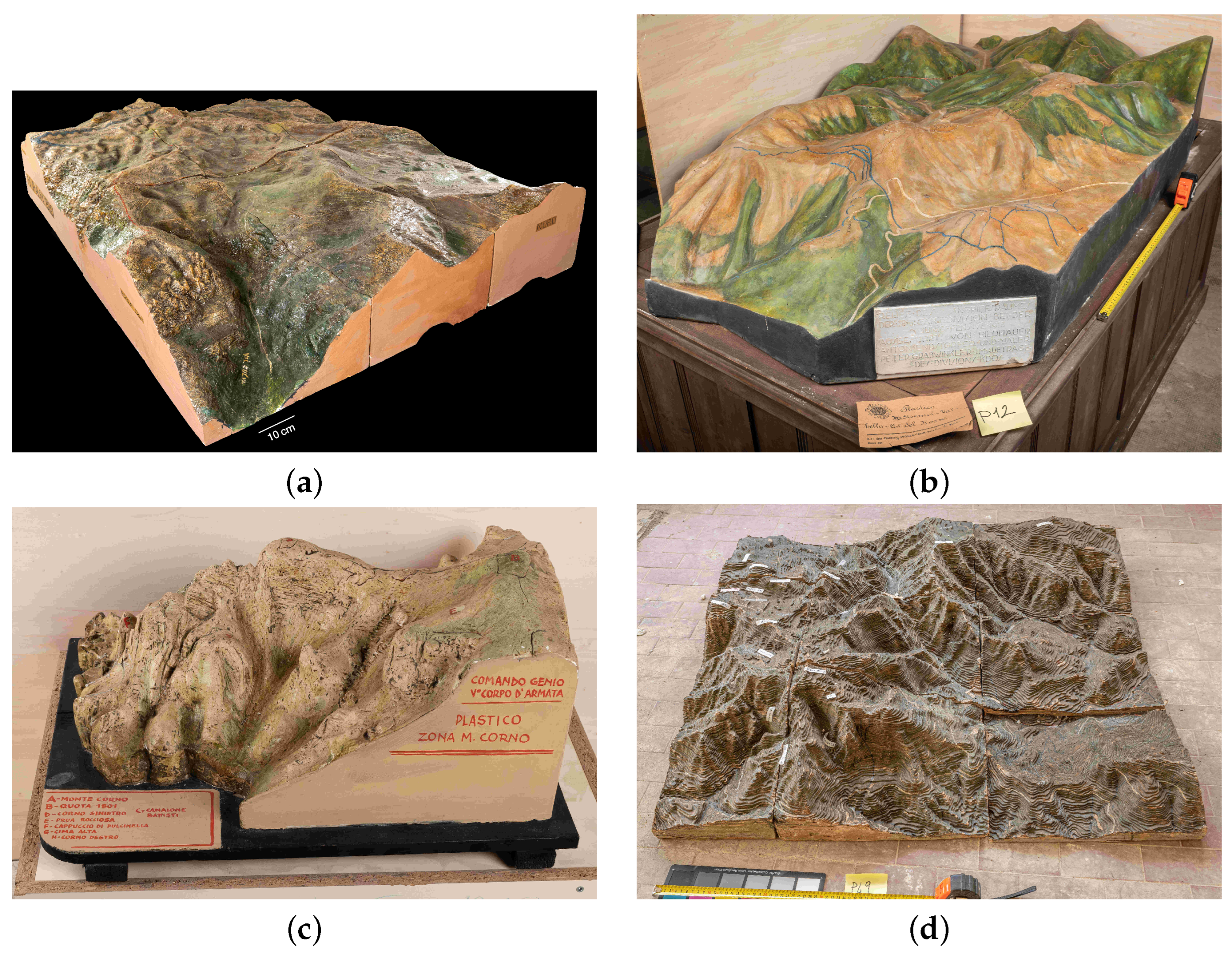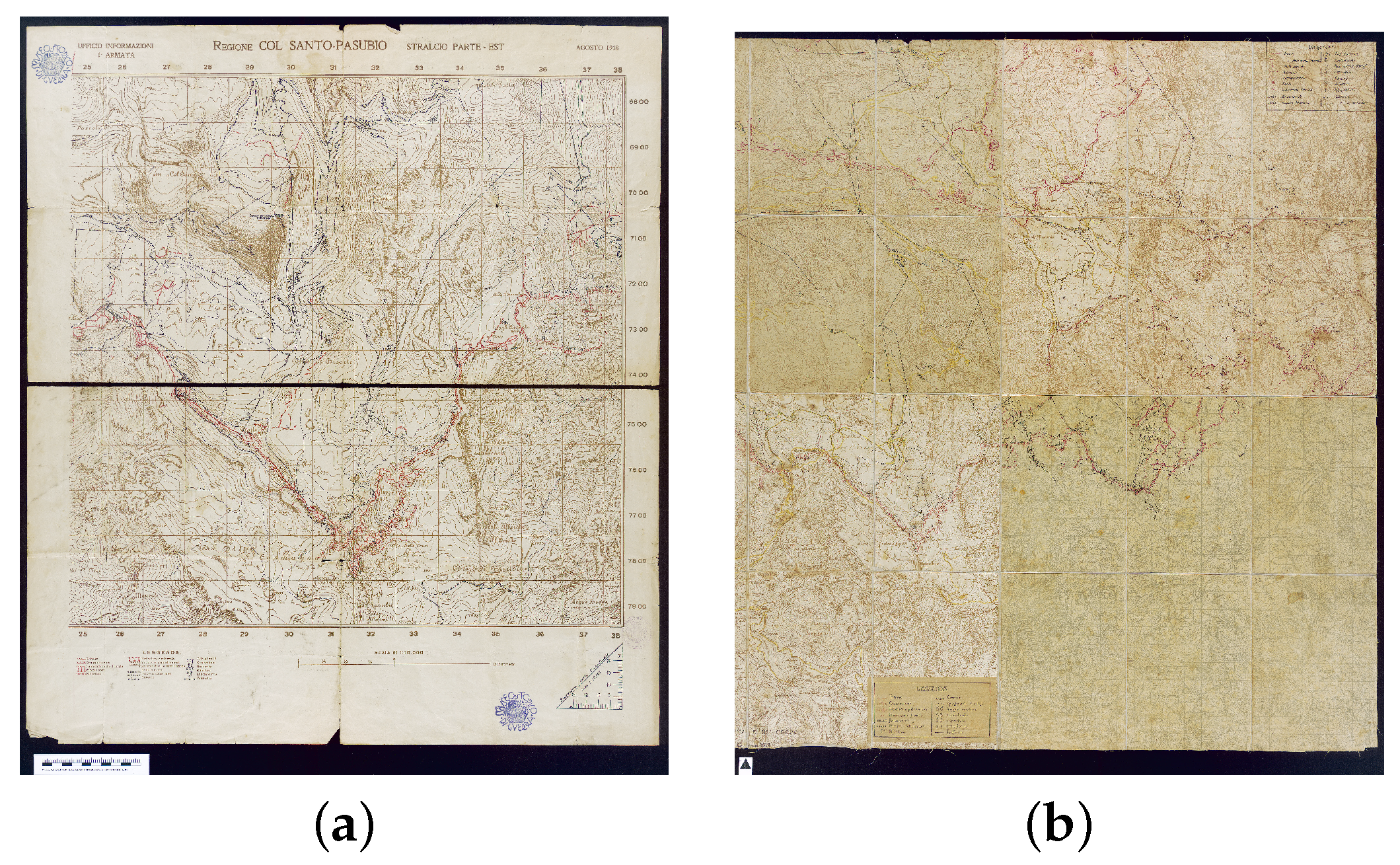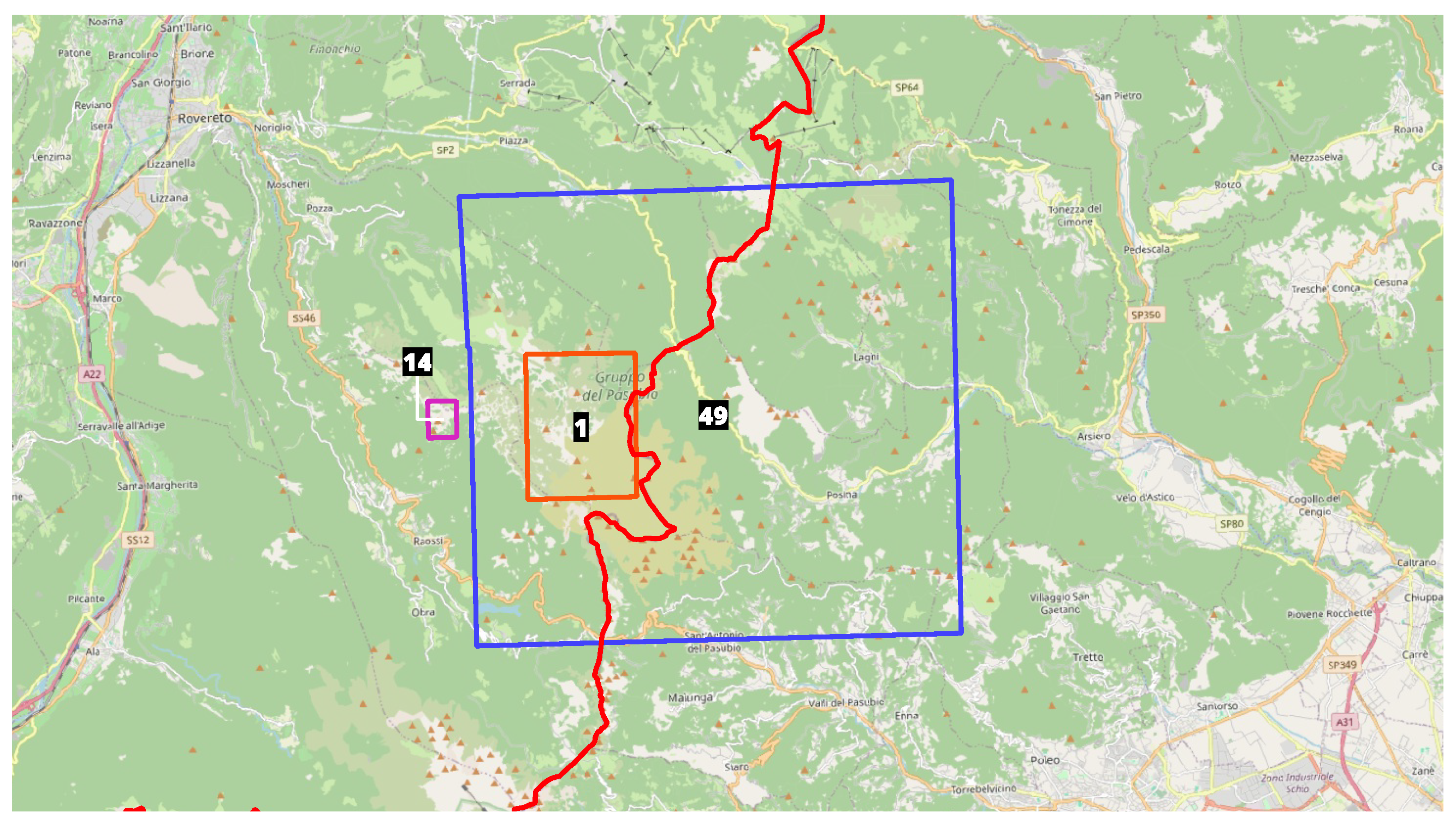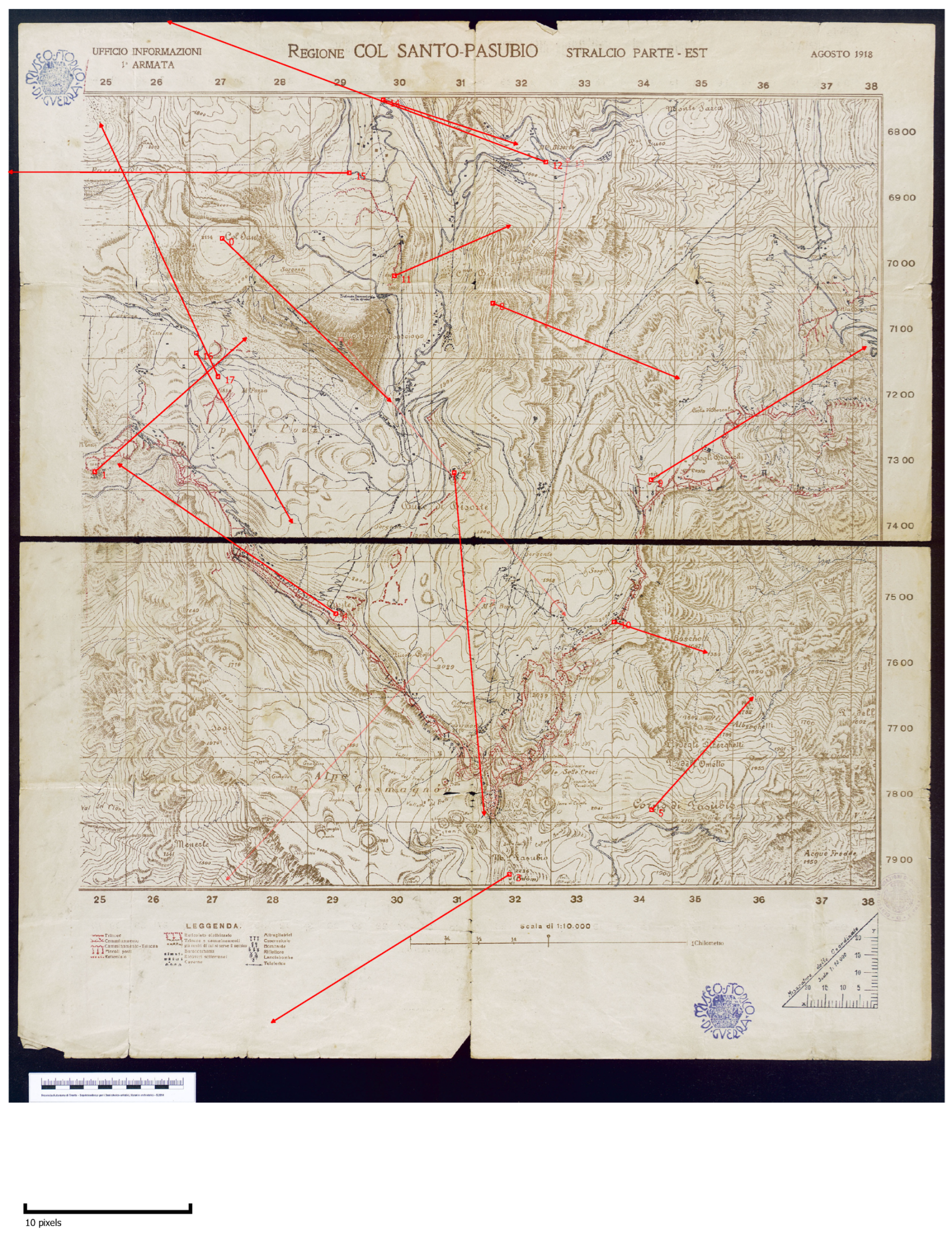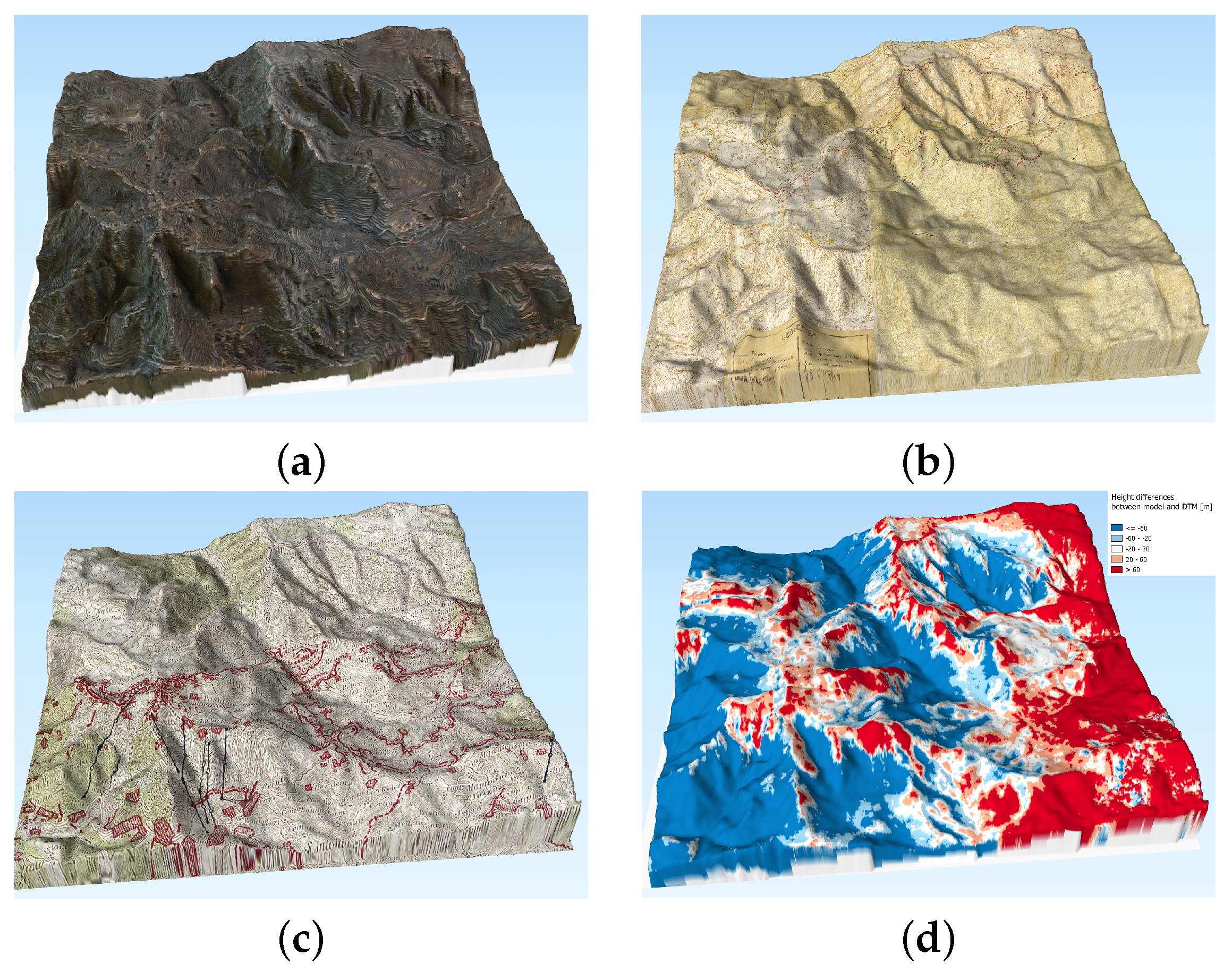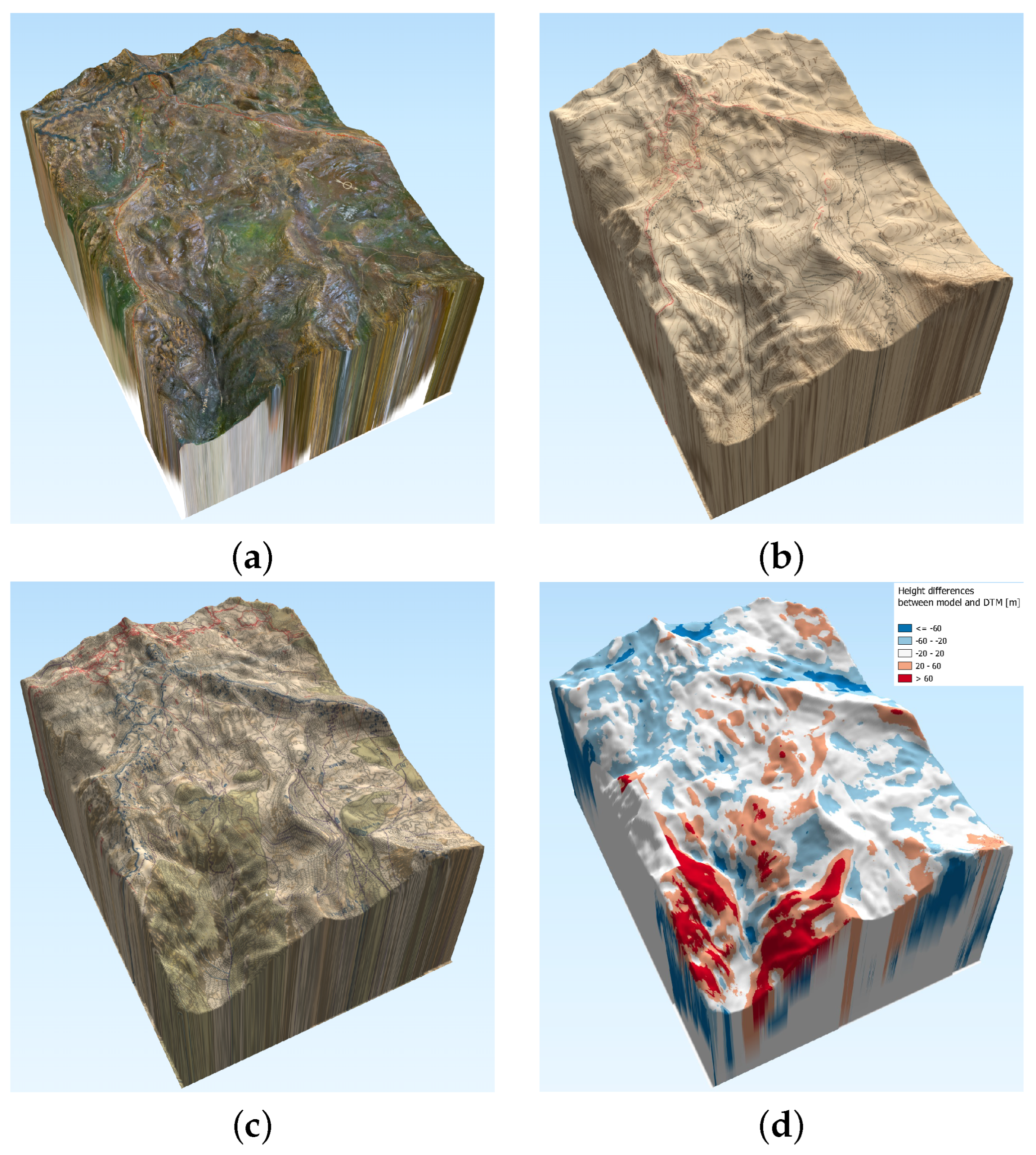The preservation of historical artifacts constitutes one of the main goals of many museum institutions. While every effort must be dedicated to safeguarding the integrity of the physical objects, the creation of “digital twins”, i.e., digital models which incorporate all the information provided by the original item, provides a way to secure this information.
This paper reports the results of work carried out as part of a broader research project launched in 2020 between the Geo-Cartographic Study and Documentation Center (GeCo) of the University of Trento and the Italian Historical War Museum of Rovereto (responsible for the agreement are Prof. Elena Dai Prà, director of GeCo and Dr. Francesco Frizzera, PhD, director of the Museum) dedicated to the study, cataloguing and valorisation of the historical cartographic and iconographic heritage of military origin of the War Museum using innovative methodologies. In particular, the results of a theoretical–methodological research for the creation of 3D digital models of the plan-reliefs of the World War I are presented using photogrammetric techniques.
The combined use of digital representation of historical artifacts, modeling the territory through the so-called “plan-reliefs”, created during World War I to describe battlegrounds on the Italian front, and historic maps of the same period is investigated.
1.1. The Museum, Its Collections and the Collection of Military Plan-Reliefs
At the end of World War I, the problem of representing and remembering the conflict that had just ended arose in most of the belligerent nations. Commemorative and celebratory monuments were built everywhere, war cemeteries were transformed into shrines and war memorabilia were displayed in national museums. The Italian Historical War Museum was founded precisely in this climate in 1921 by a group of citizens of Rovereto, a city that had been evacuated and seriously damaged during three years of fighting. The Museum, founded in a border region, inevitably emphasized and celebrated the war that had led the Trentino people to reunite with their Italian motherland; however, this nationalist and patriotic structure was immediately accompanied by a universal message of peace. On the highest tower of the castle, home to the museum, the large Bell of the Fallen was placed in 1925, made with the bronze of those artillery which had caused so much destruction. Inaugurated by King Vittorio Emanuele III, the Museum immediately acquired national importance by collecting materials donated by private citizens and objects through direct agreements with the Armed Forces. The young Kingdom of Italy did not have a national historical war museum to which it could make primary reference for war themes; most of the homeland memories were kept in the museums of the Risorgimento, often with regional connotations. This role was assumed by the Italian Historical War Museum of Rovereto which, through donations from the allied powers, received significant quantities of materials from all fronts of the Great War [
1].
The Museum’s fields of interest progressively expanded following the military history of the country. In 1929, two colonial rooms were inaugurated, which expanded following the Ethiopian War (1935–1936) [
2]. Memorabilia, photos and documents flowed in following the Spanish campaign (1936–1939) and World War II, during which the Museum remained active, continuing to enrich its collections with material from the various fronts.
After World War II, the Museum accentuated the aspects relating to the technical evolution of armaments from the modern age to the second half of the 20th century. The end of the last century led the Museum to promote historical research linked to the Trentino region, promoting publications, organizing conferences and, above all, setting up temporary exhibitions on cutting-edge historiographical themes such as war voluntarism, the female role in conflicts, the impact of war on the landscape.
During the 2000s, exhibition initiatives were added as a result of cataloging and study campaigns on the collections, thus starting a process of more in-depth knowledge of the substantial preserved heritage. Furthermore, from the beginning of the new millennium, restoration work began on the Castle, home of the Museum. These, by providing new exhibition spaces, made a profound revision of the visit itinerary possible. At present, the visit experience delves into the evolution of the way of fighting from the early modern age to the end of World War I; once the various rearrangement batches are completed, the visitor will have an overview of the conflicts from the modern age to the present day, in which they will have particular relevance and their implications on society [
3].
The Museum currently preserves approximately 100,000 objects to which are added the volumes of the historical library (over 47,000) and the archival funds (200 collections of institutions or individuals, dozens of collections, over 100,000 images). Only a small part of the collections can be displayed to the public within the visit itinerary or at other institutions with which loan and storage agreements are active. The heritage is constantly growing, above all thanks to donations, which amount to around a hundred a year, from organizations and private individuals who wish to entrust their material testimonies to the Museum, contributing to the construction of a collective memory [
4].
The collection of plan-reliefs preserved by the Museum consists of 60 pieces that have been acquired by the institution since its foundation. An important source for the study of the history of the collection is certainly represented by the museum visit guides, published since the 1920s, which contain traces of the plan-reliefs exhibited during the first decades of the museum’s life. In that period, there were around thirty plan-reliefs on display, divided between the room dedicated to the history of the city of Rovereto, the colonial rooms and the actual “plan-reliefs” room, set up in 1929 with materials from the military commands [
5]. The museum continued to acquire this three-dimensional documentary typology even after the closure of the aforementioned rooms, following the various changes to the exhibition itinerary that occurred over decades of activity. However, the plan-reliefs were used for temporary exhibition events inside the castle, but also outside, as during the recent “Armies in miniature” exhibition, set up between 2019 and 2021 in Torbole sul Garda, whose theme was modeling in its various forms [
6].
Since 2021, the plan-reliefs collection has been the subject of a project in collaboration with GeCo (the geo-cartographic laboratory of the University of Trento) which aims to study, scientifically catalog the assets and valorize them. Within this broader project, the production of digital models of the plan-reliefs allows for us to advance hypotheses of analysis and fruition implemented compared to the mere cataloging activity. From a conservative point of view, it makes possible the presence of all the necessary data on the asset without the need to manipulate it, allowing for it to be stored in sealed boxes. The virtual models are accessible to museum users (visitors, researchers, enthusiasts, etc.) on digital media within the visit itinerary, but also directly on online portals. From the digital models, it also makes possible the reproduction of the original plan-reliefs through 3D printing in order to make the product in plastic material manipulable by users without conservation problems. The possibility of manipulating copies, as accurate as possible, of original materials is an additional resource for the museum in approaching audiences with particular needs, such as blind or visually impaired people. Digital models can also be used directly in scientific research, offering the possibility of comparing plan-reliefs produced by different institutions (even by nations at war with each other). The comparison between plan-reliefs, topographical paper material and real data on the territory is interesting to understand the degree of accuracy in implementation. This can also allow considerations regarding the final purpose for which the plan-relief models were actually created and what their role was in the war events.
1.2. Digitalization of Historical Artifacts and Historical Map Georeferencing
The procedure and results described in this paper are just one aspect of a wider project aimed at digitizing the plan-reliefs property of the museum.
The purpose of this effort is (i) to create a digital copy of the artifacts for their preservation beyond the durability of the original objects, (ii) to generate a digital representation fit for virtual exhibitions, both local and on the world wide web, (iii) to test and compare different surveying techniques to identify the most suitable and (iv) to provide clues about the information and the techniques used for the artifacts’ creation.
The current paper focuses on the latter objective, describing the georeferencing process of the historical maps, the quality of the results and its congruity with the plan-reliefs models.
The creation of digital models for artifacts is nowadays extensively used and documented [
7,
8]. Photogrammetric techniques have been used to digitize archaeological finds, often with the goal of exhibiting the final outcome [
9,
10,
11]. However, the literature about the survey and reconstruction of plain-reliefs and their combination with contemporary maps is scarce. Niederöst used digital photogrammetry employing stereo images to reconstruct the surface of Central Switzerland created by the lieutenant general Franz Ludwig Pfyffer between 1750 and 1786 [
12,
13]. The relief measures (6.6 × 3.9) m at a scale of about 1:11,500.
Macher et al. created a digital model of the plain-reliefs of the city of Strasbourg using digital photogrammetry [
14]. The model, built from 1725 to 1728, measures (12 × 6) m at a scale of about 1:600. Inverse application, i.e., the creation of plan-reliefs to reconstruct parts of buildings [
15] and cities [
16] from historical documents is more common.
Structure from Motion (SfM) is used for several application focusing on surface reconstruction, with objects at very different scales, such as part of a territory, buildings or single objects. More recent authors introduced the use of SfM for archaeological surveys and objects reconstruction [
17,
18,
19]. Green et al. [
17] investigated the use of Structure from Motion methods for archaeological research focusing on the reconstruction of buildings and archaeological sites, in particular for surface reconstruction.
This paper applies the Structure from Motion approach to the surface reconstruction of plain-reliefs. Moreover, the simultaneous georeferencing of historical cartography is carried out. The availability of maps contemporary to the plain-reliefs allows not only the study of the process used in the model creation, but also the comparison with the current maps and the creation of thematic maps by digitizing the original raster maps [
20,
21,
22].
The application of digital editing of cartographic sources for historical map analysis is helpful not only qualitatively but quantitatively as well, since it allows for the comparison of older maps with more recent ones by assigning them a geometrical content. This allows for the quantitative assessment of changes in landscape features with the application of change detection methods [
23,
24].
The paper is organized as follows:
Section 2 describes the plain-relief models, the maps used in the tests and the georeferencing process;
Section 3 outlines the results of the geo-processing procedure, with focus on the choice of the correct transformation;
Section 4 discusess the results and their significance. Conclusions and future developments are presented in
Section 5.
